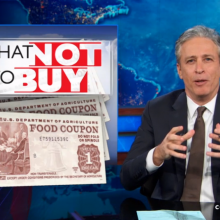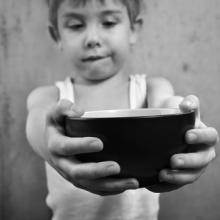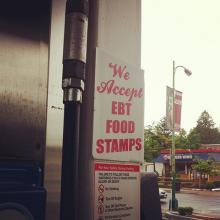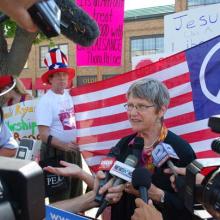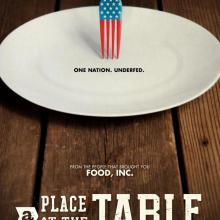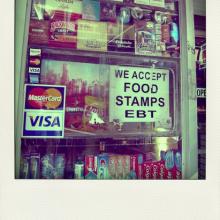supplemental nutrition assistance program
IN THE VAST and often overlooked landscapes of rural America, families face unique challenges. One critical issue stands out: the child care crisis. Our family-run produce farm in Ohio has been in production for 28 years. With three generations working to create a viable business to support our growing family, we know something about the need for child care in rural areas. The 2023 U.S. Farm Bill presents a crucial opportunity to address this pressing issue and foster early childhood development in rural communities.
The child care crisis is not unique to rural America, but rural Americans are more impacted by the lack of access to licensed child care. For example, 59 percent of rural communities are “child care deserts” compared to 56 percent of urban and 44 percent of suburban communities, according to a 2018 report by the Center for American Progress. In rural communities, families often struggle to find accessible, affordable, and high-quality options. Remote locations, limited infrastructure, and lack of providers exacerbate the challenges. The crisis not only hampers parents’ ability to work but also impedes the economic imperative to attract younger farm families to replace aging American farmers — more than half of whom are within a decade of retirement. The price of health insurance and the lack of child care make full-time farming out of reach for many younger Americans.
ONE OF THE most most frustrating times as a parent was when one of my toddlers would begin to cry and I was in the next room. Of course, I would rush right over. But once I got there, I wasn’t sure whether they were sick or had bumped into the couch. Between the pain, early language development, and their weeping, it was hard to diagnose the situation. I relied on a question my toddler could answer by pointing: “Where does it hurt?”
As we—adults, parents, faith leaders, and communities—rush to enter a post-pandemic reality, we would do well to pause and ask young people how the last year and a half has impacted them. Patient listening may lead to prophetic grief. As the prophet Jeremiah reminds, “For the hurt of my poor people I am hurt, I mourn, and dismay has taken hold of me” (8:21).
For 30 years, the Children’s Defense Fund (CDF) has plumbed the best available research to answer this question for young people: Where does it hurt? CDF’s “State of America’s Children” report, released this spring, analyzes this data and paints a picture of child well-being and our challenges ahead. The information makes clear that our children have not been immune to the crises of public health and racial injustice we have faced. As of February of this year, 13 percent of the COVID-19 cases in the U.S. were children. They are hurting physically, socially, emotionally, and economically.
I don’t typically watch much television. But when I can, I watch The Daily Show. Jon Stewart brings humor, satire and truth telling to the news of the day — qualities also characteristic of the Hebrew prophets. When I once suggested that to Stewart, he immediately denied any similarity, saying, “No, no, no, I’m just a comedian from the Borsch Belt!” But further discussion revealed a selection of topics that evoke his moral passion and even a righteous anger at political hypocrisy.
That was on vivid display in a spotlight on what Fox News commentators were saying about food stamp recipients. It began with Fox saying how families who receive support from SNAP (the Supplemental Nutrition Assistance Program) should use their food stamps, and even what they should and should not be eating, which led to repeated condemnations of poor people.
The clips from those Daily Show commentaries are below and I suggest you take a few moments to watch them. They reveal what I am calling Fox News’ “preferential option for the rich,” which is in stark contrast to the gospel’s “preferential option for the poor” and what Pope Francis is now calling the church back to. Fox News’ repeated preference for the rich and condemnations of the poor is not just a political or economic issue, but a moral and religious failure. The faith community, in particular, should take note.
SNAP began in 1964 when President Lyndon B. Johnson signed the Food Stamp Act as part of his unconditional “War on Poverty.” In his remarks upon signing, Johnson said: “I believe the Food Stamp Act weds the best of the humanitarian instincts of the American people with the best of the free enterprise system. Instead of establishing a duplicate public system to distribute food surplus to the needy, this act permits us to use our highly efficient commercial food distribution system.”
Johnson continued: “It is one of many sensible and needed steps we have taken to apply the power of America's new abundance to the task of building a better life for every American.”
Imagine. Fifty years ago the Food Stamp Act was viewed not as charity, but rather as an ingenious utilization of American enterprise in order to help “build a better life for every American.”
And it is genius.
Many of us may not know what it is like to be hungry, to regularly miss meals, or to consume a diet void of essential nutrients to live a healthy life. Poet, diplomat, and politician Pablo Neruda captures this feeling well in his poem “The Great Tablecloth.” Just before the holidays, millions of Americans learned what some aspect of hunger felt like as they saw a reduction in their SNAP (formerly food stamp) benefits.
On Nov. 1, every SNAP household saw its grocery budget reduced when an $11 billion cut went into effect — the equivalent of 10 million food stamp meals a day. And the program isn’t out of the woods yet. The House and Senate have begun to finalize a farm bill that will impact vital anti-hunger programs. A compromise proposal expected in the coming weeks could further cut SNAP by as much as $8 billion, at a time when lawmakers need to protect and strengthen it.
The central figures in four of the planet’s largest religions – Christianity, Islam, Buddhism, and Judaism – were all once homeless. Moses was encamped in the Sinai, unable to return to the Promised Land. Jesus was born in a manger. Buddha wandered through the wilderness seeking enlightenment. The Prophet Muhammad was forced out of Mecca.
Is it a coincidence that each of these figures was, at key parts of his life, dispossessed from the society around him? Hardly. This is a clear message that even the most powerful can be made powerless.
In both Leviticus and Deuteronomy, believers are directed to give a set portion of their harvest to people in poverty and immigrants. It is neither voluntary, nor are the amounts to be based on charitable whims. It is a commandment to automatically give a specific percent, making it an anti-hunger tax of sorts. In fact, both the Old and New Testaments make it clear that justice is a higher calling than mere charity.
In Mathew 25, not only does Christ proclaim that those who clothe, house, and feed the “least of these” are engaging in acts equivalent to directly aiding the Lord, he also preaches that those who refuse to aid the poor are consigned to damnation.
Most secular ethical traditions also make societal actions to reduce hunger, poverty, and homelessness a centerpiece of their teachings.
Virtually every elected official in Washington claims to abide by these ethical and faith-based traditions. Indeed, many have used their professions of faith to advance their political careers.
Yet many of these same leaders repeatedly take actions opposite to the values they espouse.
Fear, anxiety, and secrecy marked the roughly year and a half I received federal food stamps.
Like the New Testament’s famed Samaritan woman who snuck to the well at an odd hour to get water, I tried to retrieve the sustenance my family needed outside the view of my immediate community.
I tried never to let those around me see me using the food stamp card, and certainly wouldn’t have ever told my extended family or friends. I wanted no one to know I was living outside the bounds of “acceptable” life.
I had decided to find out whether I qualified for the Supplemental Nutrition Assistance Program (SNAP) while a full-time seminary student trying to raise three teens — one of them in college. I worked jobs as much as I could around my school schedule, but in the end I never had enough money to pay bills, meet my children’s needs, and buy enough groceries for the month.
“Whoever has two coats must share with anyone who has none; and whoever has food must do likewise.” (Luke 3:11)
Many of us are blessed enough to not know what it is like to be hungry, to regularly miss meals, or to consume a diet void of essential nutrients for a healthy life. But now, millions of our brothers and sisters here in the United States may, sadly, be facing these situations because of a reduction in their food stamp benefits.
Starting Friday, all households receiving food stamp benefits will see their food budgets shrink as a temporary increase expires. A family of four could lose up to $36 a month in food stamps (also known as the Supplemental Nutrition Assistance Program, or SNAP).
The message of Christ is not often so clearly presented in American media as it was yesterday, nor is that message as clearly contradicted in the same news cycle.
Yesterday, Pope Francis, while not actually changing any doctrinal stance of the Catholic church, clearly asserted in a rare and frank interview that compassion and mercy must be the light that radiates from the global church for the world to see, rather than the church’s current “obsession” with gays, birth control, and abortion.
At the same time that the pope’s words were cycling through the media, other words were also coming through loud and clear: those of Republican lawmakers who have decided that the least of these will remain just that and, accordingly, voted to slash the food stamp budget by almost $40 billion.
The juxtaposition presented between these two events is striking. It also represents an enormous divide among Christians, and, frankly, demonstrates why so many feel Christianity is a religion full of hypocrisy.
Yesterday, before Republicans in the House of Representatives voted to push through a plan to slash nearly $40 billion from the food stamp program, Jim Wallis said we would keep an eye on which way of our elected officials voted.
"We will be watching who votes against feeding the hungry this week and will remember to bring that to public attention when they run for re-election. We will be doing our own faith count today. Stay tuned for the results."
Well here are the results. The plan passed narrowly, 217-210 — with all the yea votes coming from the Republican side. Fifteen Republicans joined with the Democrats against the plan.
So, who voted for that $40 billion cut to the food stamps program, which would kick an estimated 4 million hungry people out of the program next year? Here's your list. Is your Congress member on it?
House leaders are proposing a massive cut to SNAP (Supplemental Nutrition Assistance Program), America’s frontrunner in combatting hunger. This new proposal consists of a $40 billion reduction in funding, and SNAP households across the board would be feeling the pinch beginning as soon as November.
Potential cuts reveal stark and sobering statistics that millions of Americans would face:
- The average benefit per person, per meal would decrease to below $1.40, dangerously low to maintain the minimum standards of a healthy diet;
- 210,000 kids would be cut from free school meals;
- SNAP cuts would be the equivalent of taking away 21 meals per month from a four-person household; and
- 170,000 veterans would lose out on food benefits.
About a year ago, I wrote about my family participating in the Supplemental Nutrition Assistance Program (SNAP) Challenge, which encourages families to try to live on the equivalent of SNAP assistance (food stamps) for one week. It was a growing experience for all of us, and we actually fell short of our intended goal. It turns out that it’s not easy to feed a family of four well — especially without great time and effort — on less than $20 a day.
In looking back on that experience, a number of myths come to mind that I’ve heard from folks about SNAP, which I thought I’d share here.
Sister Simone Campbell, the face of the famous “Nuns on the Bus” tours, and Rep. Paul Ryan, the brains behind the House Republicans’ budget-cutting plans, have for more than a year represented diametrically opposed camps on how to apply Catholic social teaching to American fiscal policy.
At a House Budget Committee hearing on Wednesday, the two Catholics had a chance to square off as the sister testified before Ryan’s committee about hardship in America as the nation nears the 50th anniversary of President Johnson’s 1964 declaration of the “War on Poverty.”
Yet there were few fireworks nor much in the way of theological debate, as Ryan, R-Wis., did not go out of his way to champion the GOP budget plan that bears his name. That plan focuses on cutting social programs that Campbell says are key to supporting struggling Americans and also boosting the economy.
Jesus calls us to help the poor. That is a point that few would debate. One key indicator of our obedience is how we treat the poor and vulnerable among us. Where we fall into debate is how to do it the most effectively.
One thing that gets lost in the rhetoric is that many of the solutions we have are already effective — they just need to be improved. And we have plenty of ideas that already help lift families out of poverty while encouraging them to work. Sounds perfect, right?
The Earned Income Tax Credit (EITC) is one such program. It provides a tax credit based on how much income a worker takes in — the more income they take in, the more benefit they get, up to a maximum point when it starts to phase out. This gives working people incentive to keep working rather than rely on assistance alone.
The Farm Bill might not sound like the most exciting piece of legislation ever to come out of Congress, but it has huge implications for nutrition in the United States. Among other things, the Farm Bill determines support to small farms, promoting farmers’ markets, and, oh yeah, the Supplemental Nutrition Assistance Program (SNAP), what we used to call food stamps.
SNAP is one of the most effective anti-poverty programs, set to expand with increased need and decrease when people no longer need help. Most benefits are modest, and the majority of recipients who are able to work do. In fact, SNAP is effective because it not only helps people get the food they need, but its benefits encourage them to find work.
Unfortunately, it seems like both houses in Congress are set on changing the SNAP program for the worse. Putting aside the cuts the House has planned for nutrition assistance that would kick 2 million people off the program, the Senate recently accepted a change to SNAP that flies in the face of the criminal justice system and will probably have racially discriminating effects.
A new documentary from the producers of Food, Inc. premieres today, serving up the critical problem of rising hunger in the United States with a surprising thesis: we’ve already solved it.
… Forty years ago, that is. A Place at the Table, the newest documentary from Participant Media, reveals how political will in the 1960s and 70s ushered in an era of bipartisan-sponsored, government-funded programs that “nearly solved” the problem of hunger.
Compare that with today, in which 50 million Americans rely on food assistance programs – and nearly one-in-two children will require food assistance in their lifetimes. The stark disparity between then and now begs the question: what happened?
I’ve said before that privilege often is invisible until you don’t have it. So in that light, I’m doing a little experiment in a few days with our family, and I encourage you to join in.
A lot of us never know what it’s like to try and live below the poverty line, and I tend to think the statements we hear about the poor that lack sensitivity for their situation point to this. It’s easy to say things like, “people on public assistance are lazy” (in fact, 47 percent of SNAP recipients are under 18; a majority of the remaining recipients have other income from work, and this doesn’t account for seniors and those who are disabled) and that food stamps are a “free ride” that are so attractive, it keeps people from wanting to work and get off of the assistance.
So let’s find out just how easy it is.
“SNAP” stands for “Supplemental Nutrition Assistance Program,” which is the new name for food stamps. Basically, families receive $4 a day per family member to cover food costs, so the SNAP challenge is pretty simple (in theory, at least): Live on the same amount with your family for a week.
Under a mandate from the budget resolution passed by the House in March, committees are required to cut discretionary programs to avoid the automatic cuts in military spending to take effect in January. The funds cut are to be moved from the nondefense to the defense categories in the budget. Yesterday, the House Agriculture Committee produced its share by cutting $33 billion from the Supplemental Nutrition Assistance Program (SNAP, or food stamps).
Rep. Collin Peterson of Minnesota, the ranking Democrat on the Committee had this response: “You can’t have a serious conversation about getting the budget under control when you take large items like defense off the table, which is really why we are here. Taking a meat-ax to nutrition programs that feed millions of working families in this country in order to avoid defense cuts is not a serious way to achieve deficit reduction.”
The Center on Budget and Policy Priorities estimates that a cut this large would result in 2 million people losing benefits and the remaining 44 million having theirs reduced. So here’s the equation, more hungry people = more weapons for war. It’s clear and direct.
Duane Shank is Senior Policy Advisor at Sojourners. You can follow him on Twitter @DShankDC.


